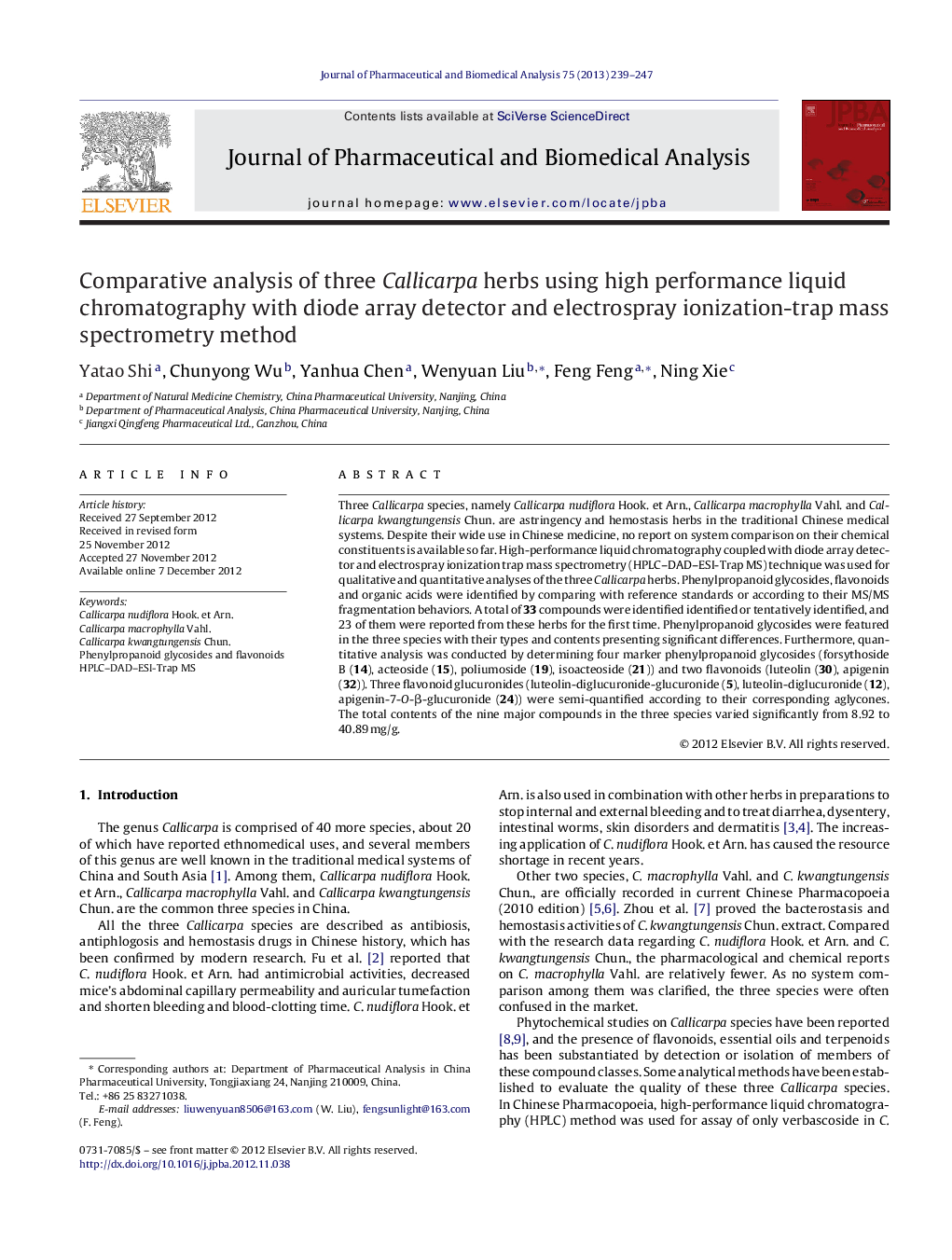| Article ID | Journal | Published Year | Pages | File Type |
|---|---|---|---|---|
| 1221448 | Journal of Pharmaceutical and Biomedical Analysis | 2013 | 9 Pages |
Three Callicarpa species, namely Callicarpa nudiflora Hook. et Arn., Callicarpa macrophylla Vahl. and Callicarpa kwangtungensis Chun. are astringency and hemostasis herbs in the traditional Chinese medical systems. Despite their wide use in Chinese medicine, no report on system comparison on their chemical constituents is available so far. High-performance liquid chromatography coupled with diode array detector and electrospray ionization trap mass spectrometry (HPLC–DAD–ESI-Trap MS) technique was used for qualitative and quantitative analyses of the three Callicarpa herbs. Phenylpropanoid glycosides, flavonoids and organic acids were identified by comparing with reference standards or according to their MS/MS fragmentation behaviors. A total of 33 compounds were identified identified or tentatively identified, and 23 of them were reported from these herbs for the first time. Phenylpropanoid glycosides were featured in the three species with their types and contents presenting significant differences. Furthermore, quantitative analysis was conducted by determining four marker phenylpropanoid glycosides (forsythoside B (14), acteoside (15), poliumoside (19), isoacteoside (21)) and two flavonoids (luteolin (30), apigenin (32)). Three flavonoid glucuronides (luteolin-diglucuronide-glucuronide (5), luteolin-diglucuronide (12), apigenin-7-O-β-glucuronide (24)) were semi-quantified according to their corresponding aglycones. The total contents of the nine major compounds in the three species varied significantly from 8.92 to 40.89 mg/g.
Graphical abstractFigure optionsDownload full-size imageDownload as PowerPoint slideHighlights► Chemical composition and contents of 9 marker compounds from the three Callicarpa species were analyzed and compared. ► The constituents were characterized by a newly developed HPLC–DAD–ESI-Trap MS method. ► A total of 33 compounds were identified, and 23 of them were reported from the three species for the first time. ► Four marker phenylpropanoid glycosides, two flavonoids and three flavonoid glucuronides were simultaneously determined. ► Phenylpropanoid glycosides were the major constituents with the types and contents were different in the three species.
